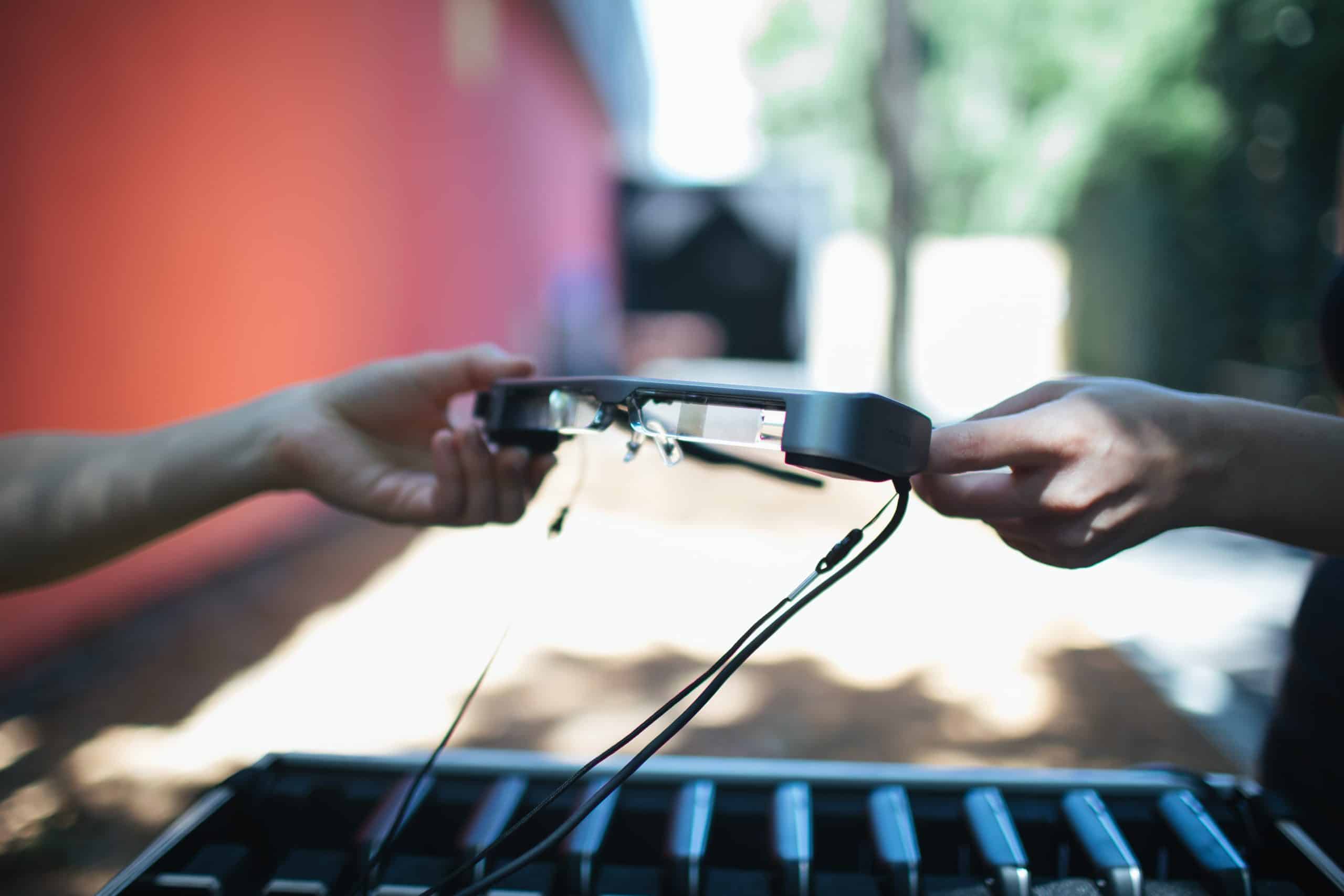Does Panthea’s smart glasses solution use AI to automatically translate everything that is said?
No, Panthea’s smart glasses solution does not use artificial intelligence (AI) for translations, as these technologies cannot grasp the nuances of live performances and literary translations. The content is always prepared in advance by experts who ensure that the surtitles are properly in line with the subtleties of the show, better allowing the audience to follow what is happening on stage to provide the best experience possible.
How do the surtitles appear in Panthea’s smart glasses solution?
Through an augmented reality (AR) projection effect, the surtitles appear in the field of vision of the glasses without obstructing the actions taking place on stage. The surtitles follow the spectators’ gaze, floating in their field of vision as if by magic. There’s no need to bob your head up and down, and no risk of disturbing other spectators! The glasses are supplied with a small touch screen that allows the spectator to customise the surtitle display settings: size, colour, brightness and position in the field of vision.
Do the smart glasses cause nausea?
No. Unlike virtual reality headsets or holographic glasses, which can in some cases cause dizziness and other feelings of discomfort, Panthea’s smart glasses enable you to stay in touch with the real environment at all times and therefore do not cause any discomfort.
Can I wear my prescription glasses with Panthea’s smart glasses solution?
Yes, Panthea’s smart glasses can be worn over prescription glasses.
Can I wear the smart glasses with my hearing implants or hearing aids?
Yes, the smart glasses can be used at the same time as hearing implants or hearing aids. In the rare event that wearing both devices is uncomfortable, we offer cords to hold the glasses in place behind the head, as opposed to on the ears.













